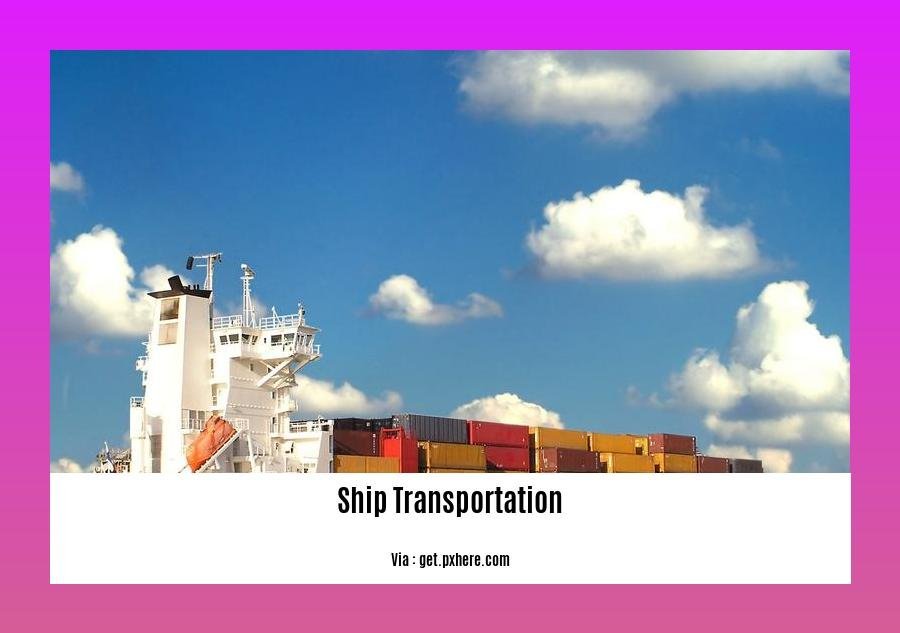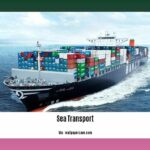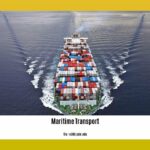Exploring the Drawbacks: The Disadvantages of Ship Transportation in the Logistics Industry
In the fast-paced world of logistics, the method of transportation chosen can make a significant impact on the overall efficiency and success of supply chains. While ship transportation has long been a widely used option for moving goods across vast distances, it is not without its drawbacks. Understanding the disadvantages of ship transportation is crucial for logistics professionals seeking to make informed decisions about their shipping strategies. From long transit times to weather vulnerability and limited accessibility, this article aims to shed light on these challenges and provide a comprehensive view of the negative aspects associated with maritime shipping.
Key Takeaways:
Slower Shipping: Shipping by sea can result in longer delivery times for goods compared to other modes of transportation.
Weather Delays: Bad weather conditions can cause further delays in shipments, increasing unpredictability and potential for extended delivery times.
Inflexible Routes and Timetables: Sea transport often has less flexibility in routes and timetables, limiting options for shipment customization.
Difficult Tracking: Monitoring shipment status during sea transportation can be challenging, leading to limited visibility and tracking difficulties.
Port Duties and Taxes: Additional costs, such as port duties and taxes, need to be paid when using sea transport, impacting the overall transportation cost.
Overland Transportation: Additional transportation over land is often required to reach the final destination, adding to logistics and cost.
Fuel and Currency Surcharges: Basic freight rates for sea transport can include additional charges like fuel and currency surcharges, contributing to increased costs.
Overall, sea transportation offers advantages in terms of lower energy consumption, suitability for hazardous goods, and cost-efficiency. However, it is important to consider the disadvantages highlighted above, which emphasize the need for careful planning, coordination, and awareness of the potential risks and challenges associated with sea transport.
Disadvantages of Ship Transportation
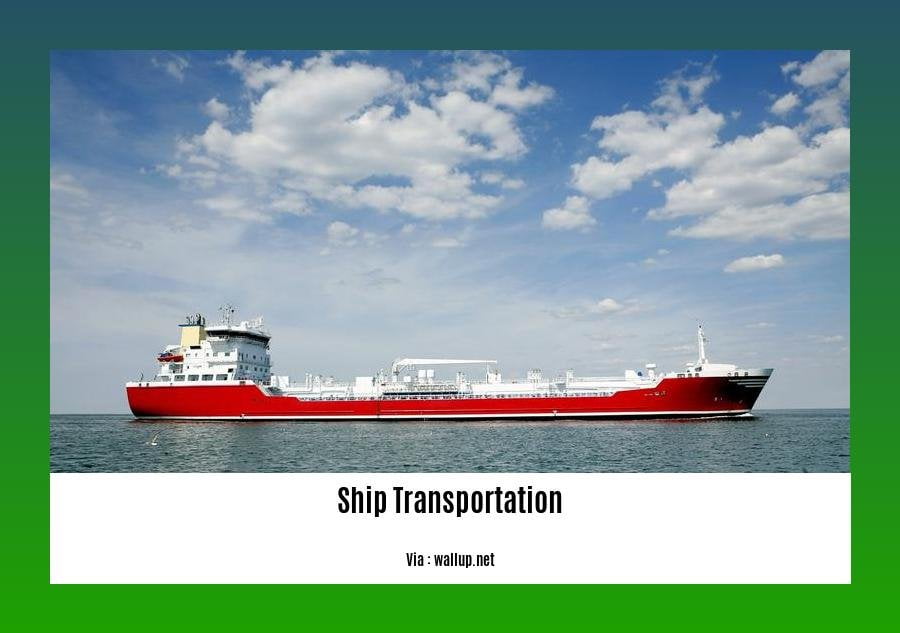
Slower Shipping
Shipping goods by sea has its downside, and one of the major ones is the slower shipping speed compared to other modes of transportation. The reliance on ocean routes can lead to longer delivery times, which may not be suitable for time-sensitive shipments. When you need to get your goods quickly to the market or fulfill urgent orders, the slower speed of ship transportation can pose a significant challenge.
Weather Delays
Another disadvantage of ship transportation is the vulnerability to weather conditions. Bad weather, such as storms or hurricanes, can disrupt the smooth flow of shipping operations and cause delays. These delays not only impact the delivery schedule but also increase the unpredictability of the overall shipping process. When time is of the essence, relying on sea transport can be risky due to its susceptibility to weather disruptions.
Inflexible Routes and Timetables
Unlike other forms of transportation, sea transport is often characterized by inflexible routes and timetables. Ships typically follow fixed routes and schedules, limiting the options for customized shipping solutions. This lack of flexibility can be a drawback when you have specific requirements for your supply chain or need to cater to unique customer demands. The inability to adapt routes and timetables easily can hinder your ability to optimize logistics operations effectively.
Difficult Tracking
Tracking goods during sea transportation can be a daunting task. Unlike other modes of transportation, where real-time tracking has become a standard feature, monitoring shipments at sea can be challenging. Limited visibility and potential difficulties in tracking can lead to delays in identifying potential issues or addressing customer inquiries promptly. The lack of reliable tracking systems in ship transportation can hinder effective supply chain management.
Port Duties and Taxes
When using ship transportation, additional costs in the form of port duties and taxes need to be considered. These additional fees can impact the overall cost of transportation and add to the financial burden of shipping goods by sea. It’s important to factor in these expenses when comparing the cost-effectiveness of different modes of transportation.
Overland Transportation
Ship transportation often requires further transportation over land to reach the final destination. This additional leg of the journey adds complexity and cost to the overall logistics process. Coordinating the transfer of goods from the port to the final destination can introduce potential delays and logistical challenges that may affect the efficiency and timeliness of delivery.
Fuel and Currency Surcharges
Basic freight rates for sea transport are subject to additional charges such as fuel and currency surcharges. These surcharges can vary and contribute to increased costs, impacting the overall competitiveness of shipping goods by sea. It’s essential to consider these additional expenses and ensure they align with your budget and financial goals.
In conclusion, while ship transportation offers advantages such as lower energy consumption and suitability for hazardous goods, it’s important to consider the drawbacks outlined above. Slower shipping speeds, weather-related delays, inflexible routes and timetables, difficult tracking, port duties and taxes, additional overland transportation, and fuel and currency surcharges should be taken into account when evaluating the suitability of sea transport for your logistics needs. Proper planning, coordination, and understanding of these disadvantages are key to mitigating risks and optimizing supply chain operations.
Check out the disadvantages of roadways in India by clicking here.
Limited Accessibility to Certain Regions
When it comes to shipping goods, ship transportation has some notable disadvantages. One of these drawbacks is limited accessibility to certain regions. While shipping by sea may be a suitable option for coastal areas, landlocked regions or areas far from the coast face challenges in accessing sea shipping routes.
So, why does limited accessibility to certain regions matter in the logistics industry?
Understanding the Challenge
Landlocked areas lack direct access to the sea, making it more difficult to transport goods through ship transportation. These regions often have to rely on other modes of transportation, such as rail or road, to move goods to and from ports. This additional step introduces complexity and cost to the logistics process.
Furthermore, regions far from coastal areas may also have limited options for sea shipping routes. Shipping companies may prioritize more heavily trafficked routes, leaving these regions with limited availability and options for sea transportation.
Impacts on Logistics
Limited accessibility to certain regions can have significant implications for logistics operations. It can lead to increased transit times and less efficient transportation of goods. Longer transit times can be especially problematic for time-sensitive shipments that require quick delivery.
Moreover, the need for additional transport over land to reach coastal ports can increase transportation costs and introduce more elements of risk and complexity into the logistics chain.
Environmental Considerations
While sea transportation offers an avenue for shipping goods, it’s important to also consider the environmental impacts associated with this mode of transport. Ships emit greenhouse gases and contribute to air pollution, which raises concerns about sustainability and the need for environmentally-friendly practices.
Ensuring accessibility to regions that are far from coastal areas can also help address environmental concerns. By making transport vehicles and infrastructure more accessible to everyone, there is an opportunity to further reduce the carbon footprint of the overall logistics industry.
Conclusion
Limited accessibility to certain regions is a significant drawback in the world of ship transportation. Landlocked areas and regions far from the coast face challenges in accessing sea shipping routes, leading to increased costs, longer transit times, and potential environmental impacts.
By understanding the limitations posed by limited accessibility, logistics professionals can better assess the suitability of sea transport for their specific needs. It’s crucial to plan, coordinate, and explore alternative transportation options to mitigate risks and optimize supply chain operations.
Key Takeaways:
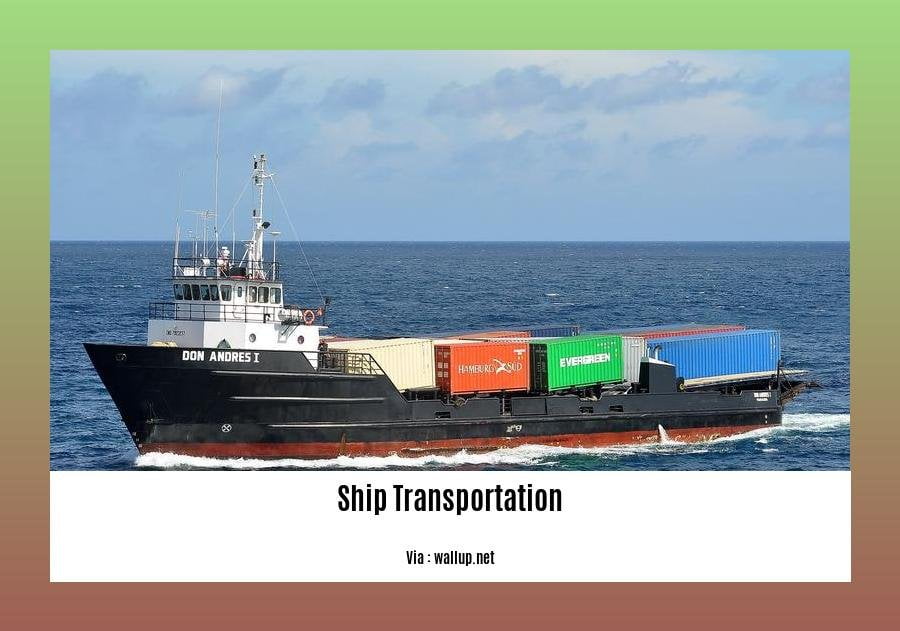
- Limited accessibility to certain regions poses a challenge for sea transportation in the logistics industry.
- Landlocked areas and regions far from the coast may encounter difficulties in accessing sea shipping routes.
- Increased transit times and less efficient transportation can result from limited accessibility.
- The need for additional transport over land introduces complexity and cost to logistics operations.
- Environmental concerns should also be addressed when evaluating the disadvantages of ship transportation.
- Making transport vehicles and infrastructure more accessible can help reduce the carbon footprint of the logistics industry.
Sources:
1. Exploring the Pros and Cons of Different Shipping Methods: Air, Sea, or Land. [Online] Available at: [
2. Maritime transportation. Advantages and disadvantages – Across Logistics. [Online] Available at: [
Environmental Impacts Associated with Maritime Shipping
Maritime shipping plays a crucial role in international trade, transporting over 10 billion tons of cargo across the world’s seas annually. However, it’s important to acknowledge the negative environmental impacts that come with this mode of transportation. Let’s explore the drawbacks of ship transportation and the environmental challenges it poses.
Air Pollution and Greenhouse Gas Emissions
Ships emit air pollutants and greenhouse gases, contributing to environmental degradation. Marine transportation accounts for 33% of all trade-related emissions from fossil fuel combustion and 3.3% of global carbon dioxide emissions[^2^]. The burning of fossil fuels by ships releases harmful pollutants, including sulfur oxides and nitrogen oxides, which contribute to air pollution and climate change.
Ballast Water and Invasive Species
Ballast water, used to stabilize ships, often contains invasive species such as bacteria, viruses, and marine organisms. When released in different ecosystems, these invasive species can disrupt the natural balance, harm native species, and lead to significant ecological consequences.
Chemical and Oil Spills
Accidental spills of oil and chemicals pose a major threat to marine ecosystems. Oil spills can have devastating effects on marine life, seabirds, and coastal habitats. These incidents not only harm the environment but also impact the livelihoods of coastal communities. Rigorous safety and preventive measures are necessary to minimize the risk of spills.
Garbage Pollution
Ships generate a significant amount of garbage, contributing to ocean pollution. Improper waste management on board and the lack of adequate waste reception facilities in ports are major challenges. This garbage pollution poses a threat to marine life, jeopardizes fragile ecosystems, and degrades water quality.
Underwater Noise Pollution
The high levels of noise generated by ships can disrupt marine life, affecting their behavior, communication, and navigational abilities. It can have detrimental effects on marine mammals, fish, and other underwater species.
Sediment Contamination and Nutrient Enrichment
Transshipment activities and shipbreaking contribute to sediment contamination of ports. These activities involve the transfer of cargo between different ships or the dismantling of retired vessels. The resulting sediment contamination can have adverse effects on aquatic habitats, marine organisms, and overall water quality.
Lag in Sustainable Marine Transportation
While Europe and North America have taken significant steps towards sustainable marine transportation, maritime companies in Asia are lagging behind. It is crucial for the industry to adopt environmentally-friendly practices, invest in research and innovation, and implement strategies to reduce their carbon footprint.
Key Takeaways:
– Marine transportation has negative impacts on the marine environment, including air pollution, greenhouse gas emissions, ballast water containing invasive species, oil and chemical spills, garbage pollution, underwater noise pollution, sediment contamination, and nutrient enrichment.
– Ships emit air pollutants and greenhouse gases, contributing to climate change.
– Ballast water can introduce invasive species into sensitive ecosystems, disrupting natural balances.
– Accidental spills of oil and chemicals can have detrimental effects on marine life and coastal habitats.
– Improper waste management and the lack of adequate reception facilities contribute to garbage pollution in oceans.
– Underwater noise pollution generated by ships can harm marine life and disrupt ecosystems.
– Sediment contamination from transshipment and shipbreaking activities can degrade water quality and impact marine organisms.
– The maritime industry needs to address and mitigate these environmental challenges to promote sustainable marine transportation.
Sources:
[^2^]: Environmental Effects of Marine Transportation – ScienceDirect
Potential Risks of Cargo Loss or Damage
Shipping goods by sea can be an efficient and cost-effective mode of transportation for businesses. However, it’s crucial to be aware of the potential risks associated with this method. The transportation of cargo by ship exposes it to various hazards, which may lead to loss or damage. In this article, we will delve into the risks involved in shipping cargo by sea and the importance of addressing them effectively.
Understanding the Risks Involved
When goods are transported by ship, there is always a level of risk they may face during transit. Potential risks of cargo loss or damage include:
Rough Sea Conditions: Ships are subject to the ever-changing conditions of the sea, including storms, high waves, and strong winds. Such rough weather can pose a significant threat to the safety of cargo, potentially leading to damage or loss.
Accidents or Collisions: Unfortunately, accidents can occur at sea, such as collisions with other vessels or grounding. These incidents can result in cargo damage or even complete loss.
Improper Packaging: Proper packaging is crucial to protect goods during transportation. However, in some cases, inadequate packaging or incorrect handling can lead to cargo damage, especially when faced with the challenges of ship movements.
Theft or Pilferage: While security measures are in place, there remains a risk of theft or pilferage during the shipping process. Cargo stored on a vessel may be vulnerable to unauthorized access, endangering the integrity of the shipment.
These risks highlight the importance of implementing strategies to mitigate potential damage or loss and ensure the safe delivery of goods. Let’s explore some measures that can be taken to address these challenges effectively.
Addressing the Risks: Mitigation Strategies
To minimize the risks of cargo loss or damage when shipping goods by sea, several strategies can be implemented:
Proper Packaging and Securing: Employing robust packaging materials and techniques appropriate for the nature of the cargo can provide an extra layer of protection. Additionally, securing the cargo properly within the vessel can reduce the risk of damage during transit.
Comprehensive Insurance Coverage: Obtaining insurance coverage that specifically addresses the risks associated with sea transportation is essential. Cargo insurance can provide financial protection in the event of loss or damage during transit.
Compliance with International Standards: Adherence to international standards, such as the International Maritime Organization’s regulations, ensures that vessels and their operators follow guidelines to enhance safety and reduce risks of accidents.
Improved Tracking and Monitoring Systems: Implementing advanced tracking and monitoring technologies can help increase visibility and enable real-time monitoring of cargo throughout the shipping process. This enhances the ability to address any issues promptly and respond to inquiries from customers regarding the status of their shipments.
By considering and implementing these measures, businesses can mitigate the risks associated with cargo loss or damage during sea transportation. It’s crucial for organizations to prioritize safety and take proactive steps to protect their goods.
Key Takeaways:
- Shipping cargo by sea exposes it to various risks, including rough sea conditions, accidents, improper packaging, and theft or pilferage.
- Proper packaging, securing cargo, and obtaining comprehensive insurance coverage are essential strategies to mitigate potential loss or damage.
- Compliance with international standards and implementation of advanced tracking and monitoring systems can enhance safety and provide better visibility throughout the shipping process.
Sources:
– Lolaapp – Advantages and Disadvantages of Ship Transport
– Springer – Risk Analysis of Marine Cargoes and Major Port Disruptions
FAQ
Q1: What are the disadvantages of shipping goods by sea compared to other modes of transportation?
A1: The disadvantages of shipping goods by sea include longer transit times, the risk of damage or loss during transit, and limited accessibility to certain areas.
Q2: How do longer transit times affect shipping goods by sea?
A2: Shipping goods by sea generally takes longer than air transport, which can result in delays in the delivery of goods.
Q3: What are the risks associated with shipping goods by sea?
A3: Despite security measures, there is always a risk of goods getting damaged or lost during transit by sea due to factors such as rough sea conditions, improper packaging, and accidents.
Q4: Why is limited accessibility a disadvantage of ship transportation?
A4: Some locations may have limited accessibility for ships due to geographical constraints or lack of adequate port infrastructure, making it challenging to deliver goods to certain areas.
Q5: How can the drawbacks of ship transportation impact the logistics industry?
A5: The drawbacks of ship transportation can impact the logistics industry by causing delays in supply chains, increasing the risk of goods getting damaged or lost, and limiting the reach of goods to certain regions.
